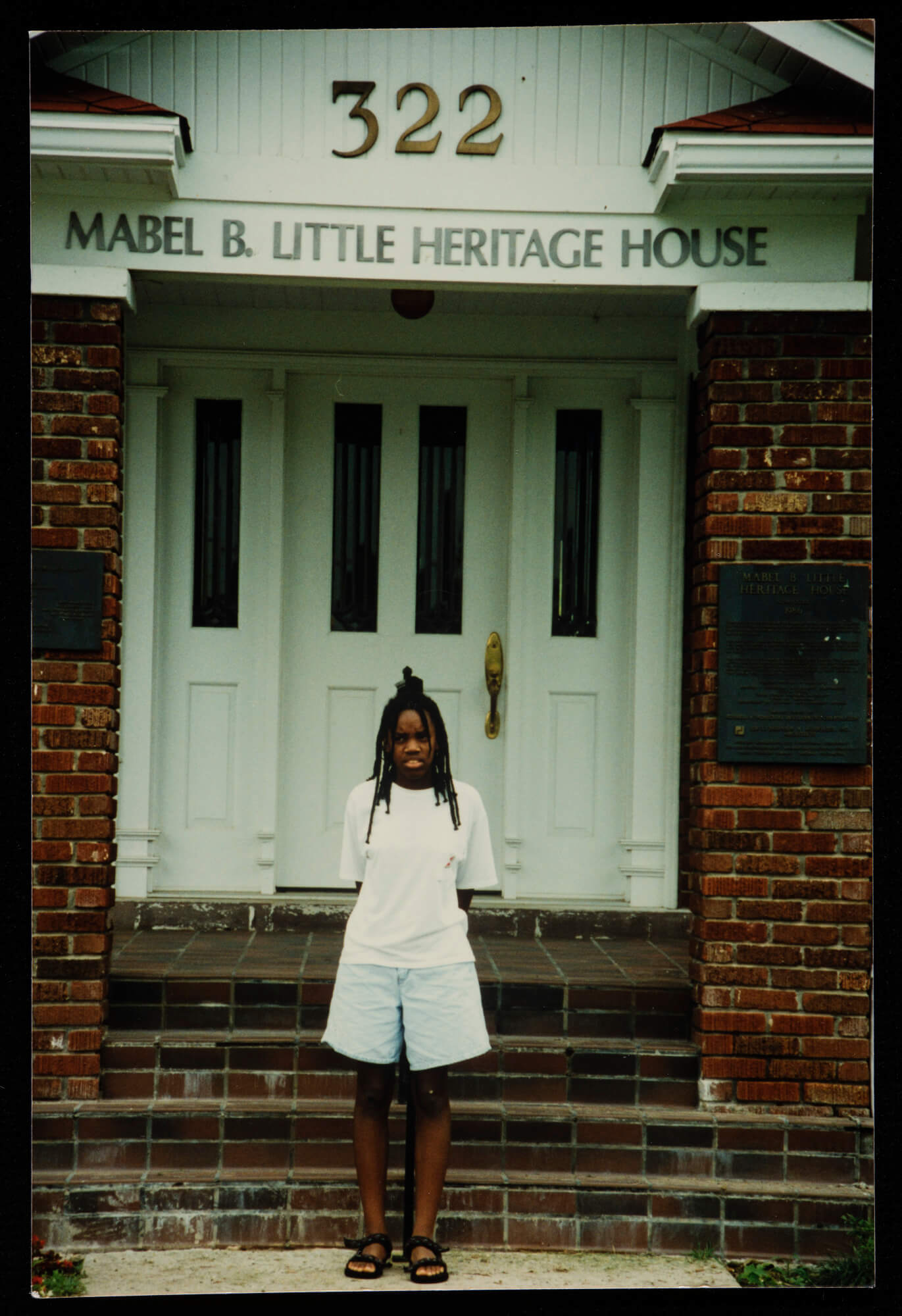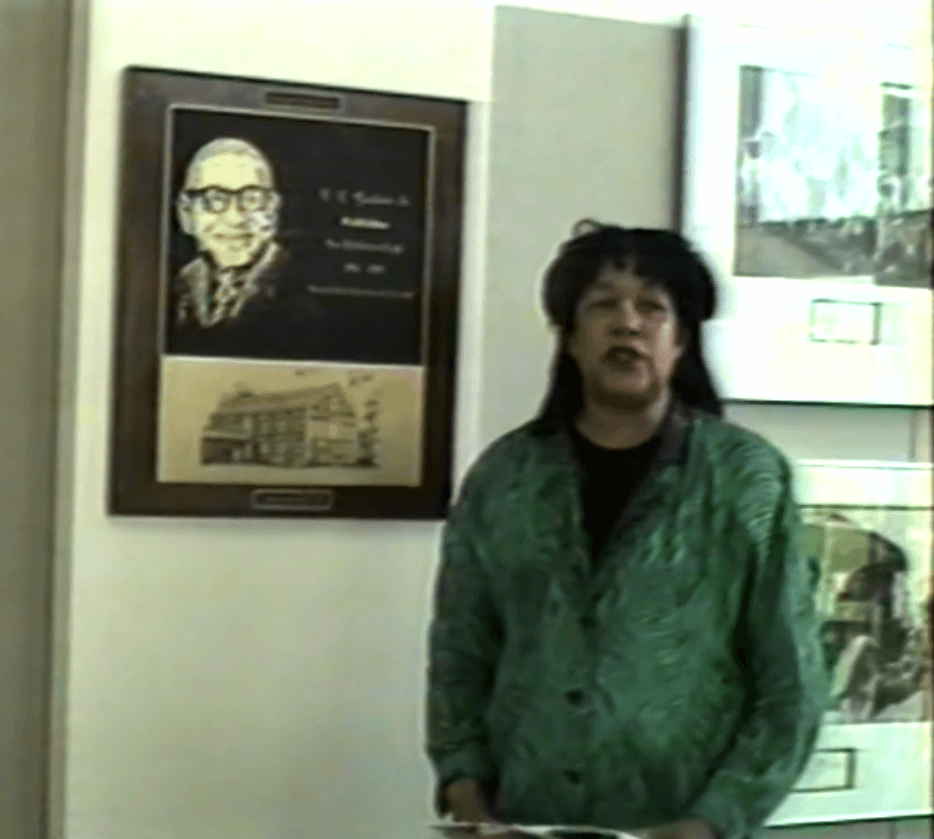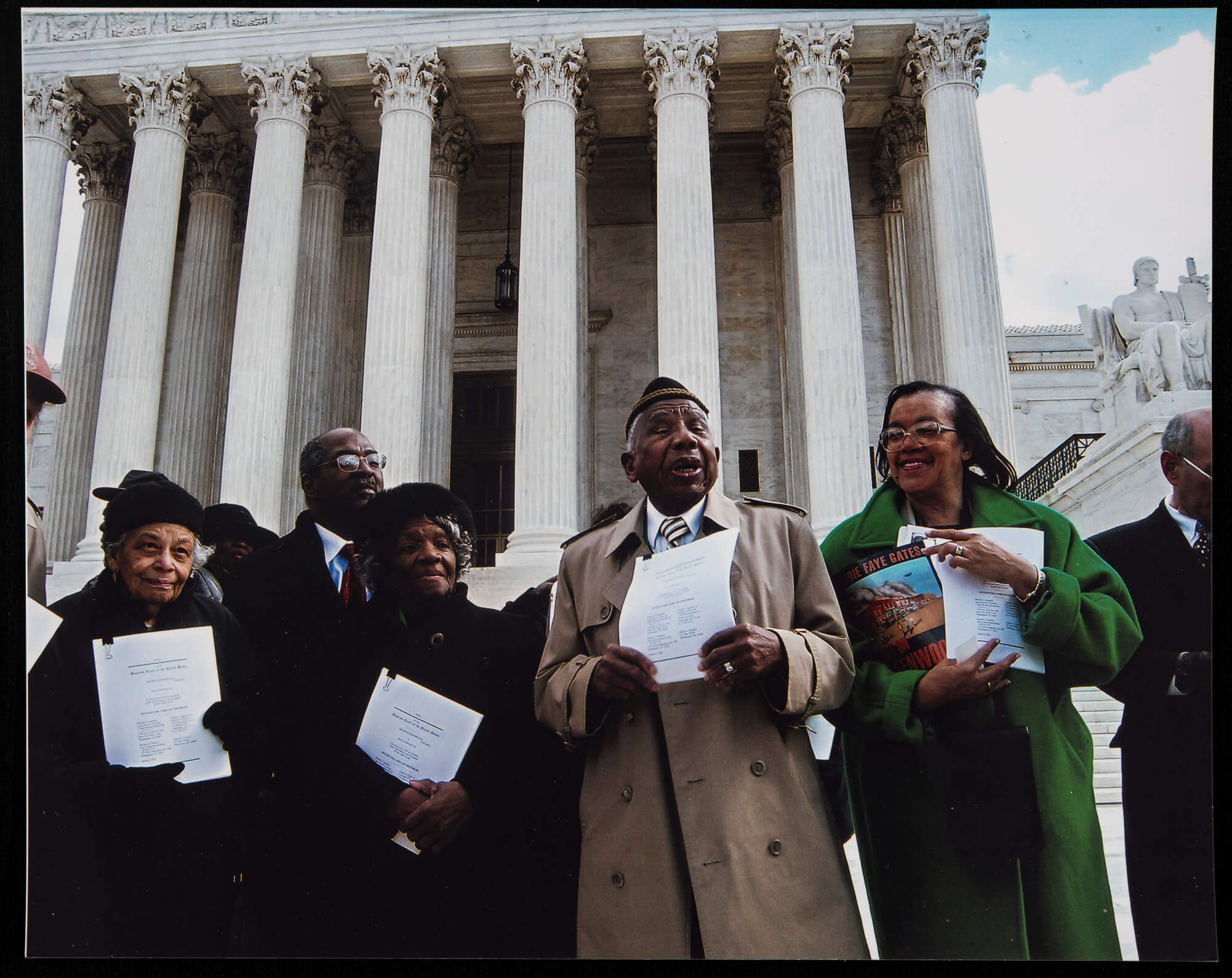Learning Objectives
- Students will define the terms “artifact” and “preserve”
- Students will identify and analyze artifacts in the Mabel B. Little Heritage House
Guiding Questions
Why do we preserve or keep things that are important for a long time?
How do artifacts teach us about the past?
Companion Collections

Ashley Nicole in front of the Mabel B. Little Heritage House in Tulsa, Oklahoma

60 Minutes Senior Producer, Michael Rosenbaum and Eddie Faye Gates inside the Mabel B. Little Heritage House

North Tulsa Oral History Project video including Wilhelmina Guess Howell, Dr. Lloyd H. Williams, Jr., and Eunice Colman Jackson
Background and preparations
Preparation for Complicated Conversations
Students in this lesson will focus on the preservation of The Mabel B. Little House in Tulsa’s Greenwood neighborhood. However, it is impossible to teach about the need to preserve the house without acknowledging The Tulsa Race Massacre. The following strategies and practices help teachers prepare their classroom environment for young students.
Before beginning the lessons, teachers should consider their own comfort levels in facilitating difficult conversations. Young students will have many questions about events and terminology. Being prepared for such questions is imperative. Although the lesson carefully considers using language appropriate for young students, teachers should be aware that students may have heard other terms used elsewhere. The lesson reading does not use the words “massacre” or “riot”, however teachers should be prepared in case a student asks or uses those words. Teachers can also establish norms for discussion by using sentence stems.
During the lesson, teachers should manage the emotions of students by checking in with them and giving them space to express their thoughts and feelings. Teachers can allow time for students to journal, draw, and ask questions.
Following the lesson, students need to process and reflect on the conversations. Teachers are encouraged to use the extension activities to help students process the lesson further. Lastly, teachers can use online resources to help build community and foster healthy, yet difficult conversations.
Handouts and Learning Resources
Time Capsule Handout
Definitions
The House that Still Stands
Video Handout Sheet
Gilcrease Museum Collections Connections
Eddie Faye Gates Collection Photos: 4327.10880, 4327.10850
Eddie Faye Gates Collection Video: 5327.1671B (4 video clips)
–Parlor Room
–Courting Bench in Parlor Room
–Breakfast Room
–Dining Room
Activities
I. ARTIFACT & TIME CAPSULE ACTIVITY
Hook: What is an artifact?
1. Ask students to think of something that is important to them. Give examples of toys, stuffed animals, or items in their house that are important to them and their family.
2. Tell them they are going to imagine they will put their important things in a time capsule near their home for someone to find 100 years from now. Someone in the future would call the items they find “artifacts”. Project a definition of the words “artifact” and “preserve”.
(Assessment)
Give students the Time Capsule Handout. Read the directions aloud to them. Have them draw their artifacts on the handout.
Have students share their time capsules with a partner and/or the class.
II. PHOTO & VIDEO ANALYSIS ACTIVITIES
Photo Analysis – Photo 4327.10880
Warm up
1. Project the photo of Eddie Faye Gates inside the Mabel B. Little House.
2. Ask students if they think this photo is from now or the past.
3. Ask students to share what artifacts they see in the photo.
Activity
1. Explain to students this is a photo of the house from the outside.
2. Share with students they will learn about the house in the photo and family who lived there.
*Make sure to point out that the photos that they have viewed are not the family they will read about, but instead are people who visited the home many years later.
3. Read aloud the “The House that Still Stands” reading.
4. Discussion Questions:
a. After the Mackey House was destroyed, how did the family rebuild their house differently?
b. Why did the family decide to use brick when they rebuilt their home?
c. Why was the Mackey House moved to a new location?
d. How did the architect move the house?
e. How did other people in the Greenwood community use the house?
f. Why do you think it was important to move the house instead of letting it be destroyed again?
g. Why was the Mackey house meaningful to the people of Greenwood?
Video Analysis – 5327.1671B
–Parlor Room
–Courting Bench in Parlor Room
–Breakfast Room
–Dining Room
1. Tell students they are going to watch a tour of the house. Ask them to notice artifacts they see as they watch the video.
2. Tell students the person who is giving the tour in the video is Tulsa educator and historian Eddie Faye Gates. Explain to students that she filmed hundreds of interviews with people to preserve the history of Greenwood.
3. While watching each clip of the video, write down student observations on chart paper.
4. Discussion questions:
a. What was the parlor used for during the early 1900s? (It was used for hosting guests.)
b. Where did the Mackey family get their furniture? (They traveled to Europe and other places outside of America to get their furniture.)
c. What was a sign that someone had a lot of money during this time? (If they had a separate eating room/breakfast room and dining room it was a sign they had money.) Replay the Breakfast Room clip and the Dining Room clip to help students answer this question.
(Assessment)
Have students answer the questions on the Video Handout Sheet.
Assessment
I. For the ARTIFACT & TIME CAPSULE ACTIVITY, give students the Time Capsule Handout. Read the directions aloud to them. Have them draw their artifacts on the handout. Have students share their time capsules with a partner and/or the class.
II. For the PHOTO & VIDEO ANALYSIS ACTIVITIES, have students answer the questions on the Video Handout Sheet.
Extensions
Teachers can show The Mabel B. Little Heritage House video on the Greenwood Cultural Center website. Students can also discuss artifacts they see in the video. Students can use the coloring book available on the Greenwood Cultural Center website and label the artifacts. Additionally, the Greenwood Cultural Center has lessons and activities that will complement this lesson well.
Bibliography
“1921 Tulsa Race Massacre.” Tulsa Historical Society & Museum, www.tulsahistory.org/exhibit/1921-tulsa-race-massacre/.
Greenwood Cultural Center. The Sam & Lucy Mackey House https://www.greenwoodculturalcenter.org/mabel-b-little-heriage-house
Let’s Talk Facilitating Critical Conversations with Students, Learning for Justice, 2019.
Modifications
During the opening activity, make a list of things that could be important to students to help them brainstorm items for the time capsule. While reading the background information to students, stop after each paragraph to ask discussion questions. Have students underline the sentence with the answers to help them find the answer. During the video analysis, write the name of each clip before watching the video. While watching the video, point to the name of the rooms written on the board. While writing the list of artifacts, label the room in which the students saw the artifact. This will help them with the final handout when they draw the artifact. As needed, rewind and repeat the video clips. Repeat words or phrases aloud that may be difficult for students to hear.
Content standards
Oklahoma Academic Standards Social Studies Practices
K.3 The student will understand that history relates to events and people of other times and places.
K.3.1 Explain how events of the past may have affected our community and the way we live today.
K.3.2 Explain how we honor people and events of the past.
K.3.3 Use words and phrases related to chronology and time to explain how things change including before/after and yesterday/today/tomorrow.
1.3 The student will examine important events and historical figures in the nation’s past.
1.3.2 Describe the contributions of people and groups who have shaped our history and ways we commemorate important places and events of the past.
1.3.4 Identify primary sources and how they help us to learn about the past.
2.3 The student will examine the lives of notable Americans who expanded peoples’ rights and freedoms through our history.
2.3.1 Analyze the contributions of people and groups who have shaped our history and who are honored by holidays and commemorative months.
2.3.2 Compare perspectives of people in the past to people in the present.
2.3.3 Compare different accounts of the same historical event using primary and secondary sources.
2.3.4 Explain possible reasons for events in the past.

